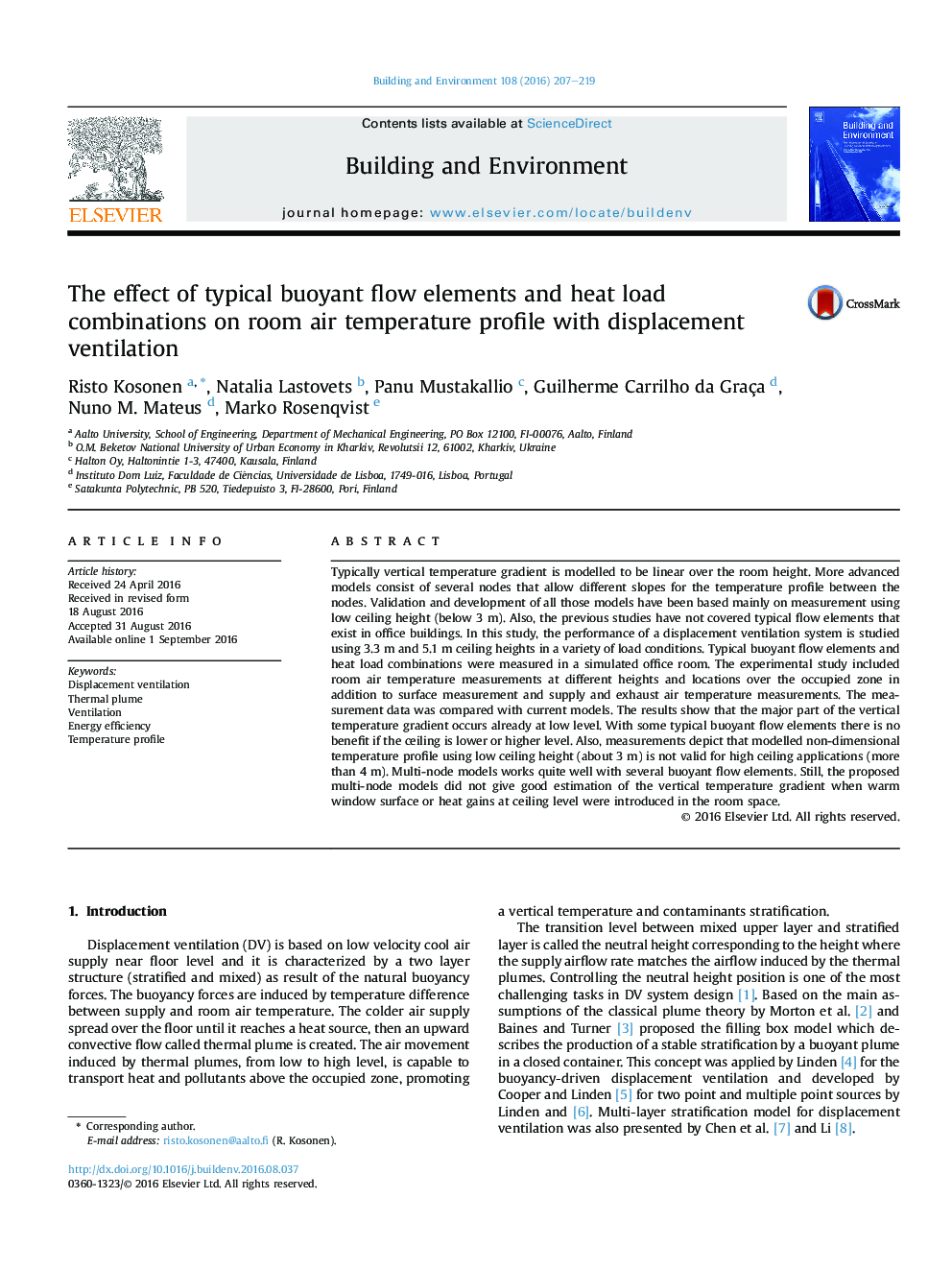| کد مقاله | کد نشریه | سال انتشار | مقاله انگلیسی | نسخه تمام متن |
|---|---|---|---|---|
| 6479307 | 1428384 | 2016 | 13 صفحه PDF | دانلود رایگان |
- With DV, there is no benefit if the ceiling is at lower or higher level.
- Exiting models predict too low air temperatures in the occupied zone.
- 3-node model was good with the heat gains that are locating in the occupied zone.
- 2-node linear models worked well with window and ceiling heat gains.
Typically vertical temperature gradient is modelled to be linear over the room height. More advanced models consist of several nodes that allow different slopes for the temperature profile between the nodes. Validation and development of all those models have been based mainly on measurement using low ceiling height (below 3Â m). Also, the previous studies have not covered typical flow elements that exist in office buildings. In this study, the performance of a displacement ventilation system is studied using 3.3Â m and 5.1Â m ceiling heights in a variety of load conditions. Typical buoyant flow elements and heat load combinations were measured in a simulated office room. The experimental study included room air temperature measurements at different heights and locations over the occupied zone in addition to surface measurement and supply and exhaust air temperature measurements. The measurement data was compared with current models. The results show that the major part of the vertical temperature gradient occurs already at low level. With some typical buoyant flow elements there is no benefit if the ceiling is lower or higher level. Also, measurements depict that modelled non-dimensional temperature profile using low ceiling height (about 3Â m) is not valid for high ceiling applications (more than 4Â m). Multi-node models works quite well with several buoyant flow elements. Still, the proposed multi-node models did not give good estimation of the vertical temperature gradient when warm window surface or heat gains at ceiling level were introduced in the room space.
Journal: Building and Environment - Volume 108, 1 November 2016, Pages 207-219
